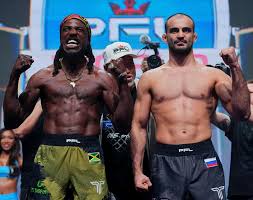The UFC’s new $7.7 billion broadcast partnership with Paramount and CBS has stirred excitement among fans but sparked sharp criticism from one of the sport’s greatest champions.
The seven-year agreement includes 43 annual events—13 of them numbered—and moves away from the traditional pay-per-view model in the United States. Starting in January, all UFC events will stream live on Paramount+, ending decades of pay-per-view as a fixture for American fans.
While the deal is a landmark win for the UFC as a promotion, Georges St-Pierre believes it will hurt the athletes.
“It could be good for the UFC, as a promoter, terrible for the fighters because when I was competing, I was able to have a great argument to negotiate on my contract,” st-Pierre told Covers. “I could tell the UFC, ‘Hey, if you want me to do all the promotion, I want to become a partner. I want a piece of the pie to negotiate a part of the pay-per-view revenue. Because if I’m doing all the promotion, I’m helping you, but you need to help me. You need to make me a partner.’ So it might be a bad thing for the fighters in a way that they have less leverage.”
St-Pierre stressed that the change strips fighters—especially big names—of a vital bargaining chip. Without pay-per-view revenue as a measurable performance metric, fighters could find it harder to negotiate higher pay.
“That’s what I think,” st-Pierre said. “I think it’s going to take off some leverage for the big names to have an argument to negotiate more money.”
Despite the UFC’s projected $1.1 billion annual media rights revenue from the deal, St-Pierre remains convinced that fighter pay could suffer. UFC executives have not yet confirmed whether salaries will rise under the new agreement.
Fighter pay has long been a contentious issue in mixed martial arts. St-Pierre, a former UFC welterweight and middleweight champion and a 2020 Hall of Fame inductee, has consistently voiced his opinion when he feels the promotion’s business moves put fighters at a disadvantage. His latest comments put him in the middle of another high-profile debate about the balance between organizational growth and athlete compensation.




